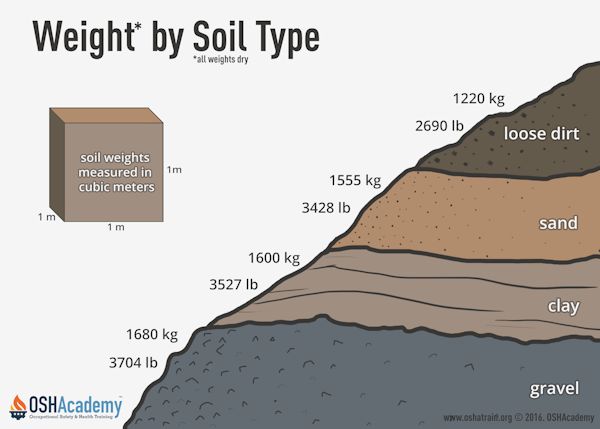Unit Weight of Soils
This refers to the weight of one unit of a particular soil. The weight of soil varies with type and moisture content.
One cubic foot of soil can weigh from 110 pounds to 140 pounds or more, and one cubic meter (35.3 cubic feet) of soil can weigh more than 3,000 pounds.
A safe slope can be defined as the maximum angle of the edge wall or bank of an excavation at which sliding will not occur. The unique mixtures of the different types of soil (sand, clay, silt and rock) necessitate different safe slopes from one excavation site to the next.
There are other complicating factors that can result in sliding soil failures. During an excavation, visibly different layers of soil may be uncovered. Each of those layers may call for different safe slopes. It is essential to plan your excavation around the most gradual (rather than steepest) safe slope for all of the different soil types and layers encountered during the excavation.
Another complicating factor is that soil composition mixtures may vary significantly from one area of the project to another. During an excavation, as the soil composition changes, the safe slope for trench wall excavation also changes. Thus, across an excavation site, the slope of the bank may need to be different to provide a safe working environment.
Knowledge Check Choose the best answer for the question.
1-5. One cubic foot of soil can weigh _____, and one cubic meter of soil can weigh _____.
You forgot to answer the question!

